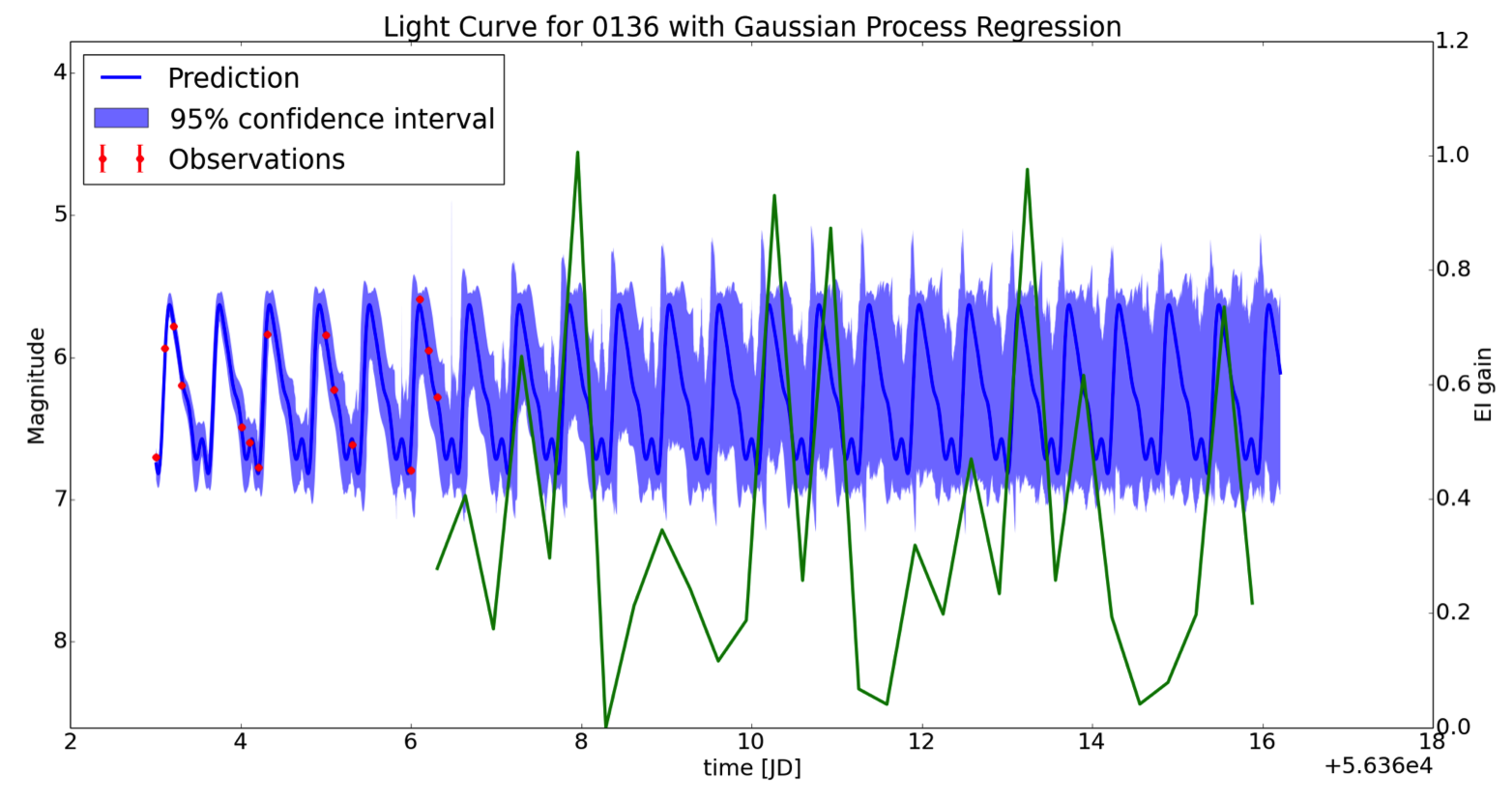CHILE 2014
Chile-Harvard Innovative Learning Exchange (CHILE) 2014
In the first portion of Group 3's project, we created a tool that searches astronomical databases (NED, Simbad, NRAO, UKIDSS, Vizier, SDSS), returning in .csv form the existing information about searched celestial objects. The serial and distributed programs are available for download and use, and the README can be found here: http://bit.ly/NhuJa9.
In the second portion of the project, we use a non-parametric Gaussian Process with a periodic exponential correlation function to fit the light curves of periodic variable stars. This allows the light curves to have any shape, as long as it is periodic; that is, we do not impose a model. We find the period from a Lomb-Scargle periodogram; the errors from this and the regression process form the confidence interval.
In order to determine the associated cost of future observations, we first determine the time at which “expected information” (EI) is maximized. EI is a measure that depends on Shannon entropy (Loredo 2004).

Next, we define cost in terms of the amount of time it takes to get additional observations on twelve telescopes (including, for example, Gemini, VLT, Magellan, SOAR) and different bands (u, g, r, i, z, J, H, Ks):

